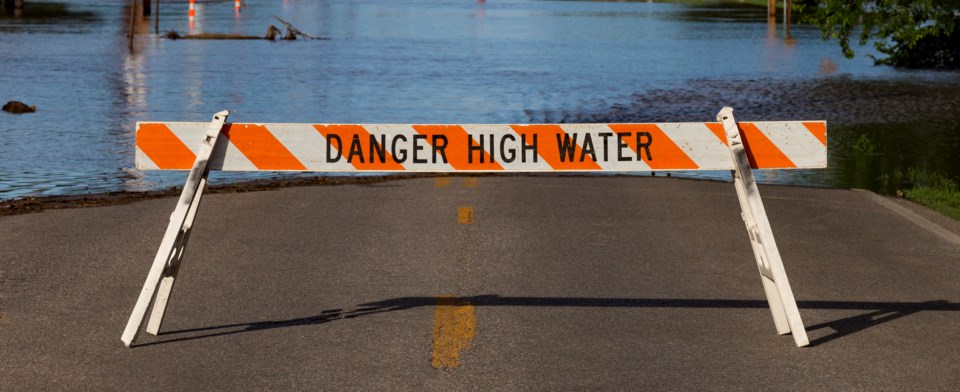High water at Sandy Bay has hit its peak, but northern communities along the Churchill River system aren't out of the woods yet.
For the first time in weeks, water levels on the river at Sandy Bay have started declining, going from a forecasted peak of 10.15 metres August 5 to 10.008 metres August 6, according to the Manitoba Hydrological Forecast Centre (MHFC). The community is still under a flood warning, along with Pukatawagan, Granville Lake, Leaf Rapids, The Pas and Cormorant.
According to the Saskatchewan Water Security Agency (WSA), flows have been reduced from the Whitesand Dam, located near Southend on the Reindeer River which feeds into the Churchill River. Less water flowing from the dam means less water going into the river system, offsetting some of the high water both in Sandy Bay and further downstream.
Since April 1, more than 300 millimetres of rain has fallen on portions of northern Saskatchewan near Sandy Bay.
"The entire Northern Saskatchewan region remains at potential risk due to ongoing precipitation and high-water levels. While some Northern communities have recently passed peak levels, the La Ronge and Air Ronge area to the Manitoba border remain particularly vulnerable for the coming weeks," reads a WSA report issued August 5.
At Pukatawagan, the level of Highrock Lake is about a metre higher than the lake's bankfull capacity according to the MHFC. Granville Lake's level as of August 6 is about 1.3 metres higher than the lake's bankfull capacity, while Leaf Rapids is about 1.1 metres higher than the river's bankfull capacity.
Meanwhile, the WSA announced an increase in funding for the provincial Emergency Flood Damage Reduction Program (EFDRP), with another $2 million being dedicated to the program to help people affected by widespread flooding. Previously, only $500,000 was budgeted for the EFDRP and each applicant was limited to $100,000. The budget is now at $2.5 million and the cap has been removed.
“We are facing an unprecedented year with many areas of Northern Saskatchewan facing a record rainfall since April 1,” said Greg Ottenbreit, government minister responsible for the WSA, in the August 5 statement.
“It is clear we have to both expand the financial capacity of the program this year to provide immediate assistance and for the long-term we also need to better understand certain watersheds where limited information is available.”
Some of the funding from the EFDRP will go toward doing a study and analysis of this summer's flooding once the season concludes.




